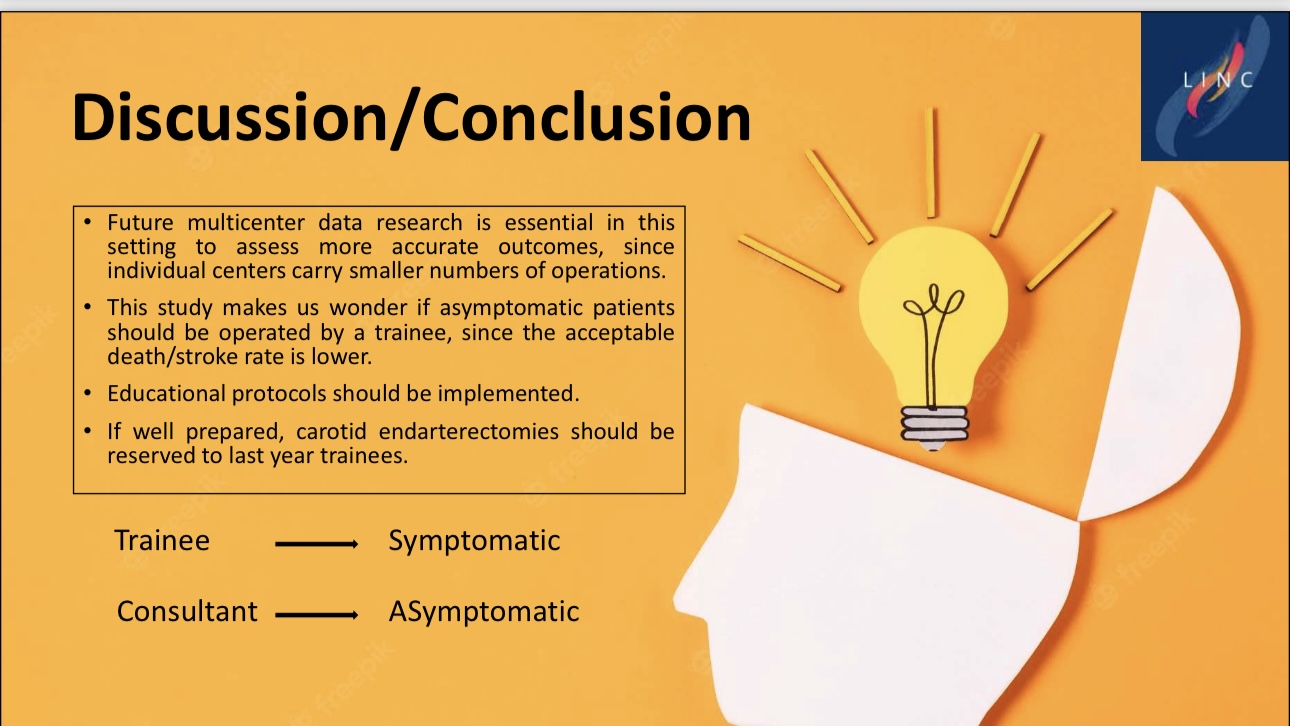Presenter: Celso Nunes, Luis Antunes, Manuel Fonseca
Hospital: Vascular Surgery Department, Coimbra, Portugal
Abstract
This retrospective study analyzed 381 carotid endarterectomy (CEA) cases (2016–2022) to compare outcomes between consultant-led (n=246n=246) and trainee-led (n=135n=135) procedures. Trainees demonstrated significantly higher 30-day stroke rates in asymptomatic patients (7% vs. 0%, p<0.03p<0.03), though overall complication rates showed no statistical difference. The study advocates for stringent training protocols and limiting trainee involvement in asymptomatic cases to high-seniority residents.
Introduction
Carotid endarterectomy is critical for stroke prevention, yet balancing trainee education with patient safety remains challenging. This study evaluates the impact of trainee-led CEA on 30-day stroke and mortality rates, emphasizing asymptomatic patients.
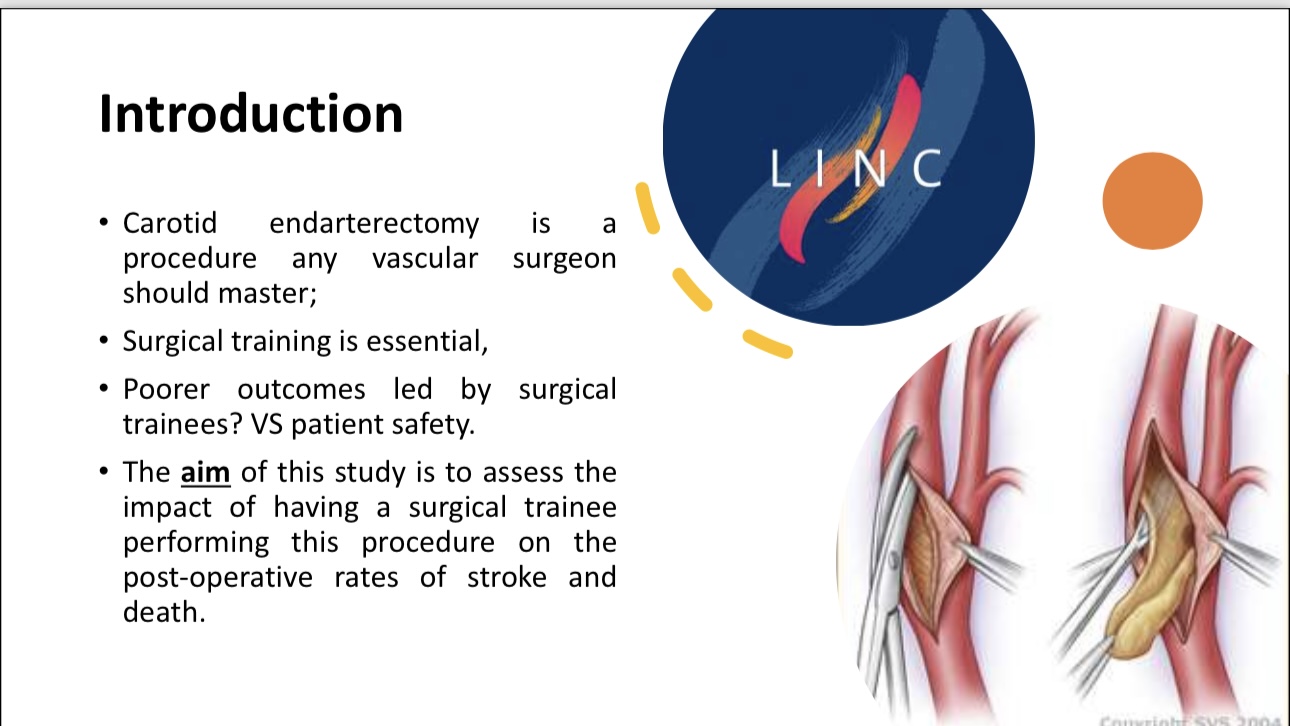
Methods
Data Source: Consecutive CEA cases stratified into consultant and trainee groups.
Primary Outcomes: 30-day stroke, mortality, and morbimortality (MB) rates.
Subgroup Analysis: Stratified by symptomatic (neurological events within 6 months) vs. asymptomatic status.
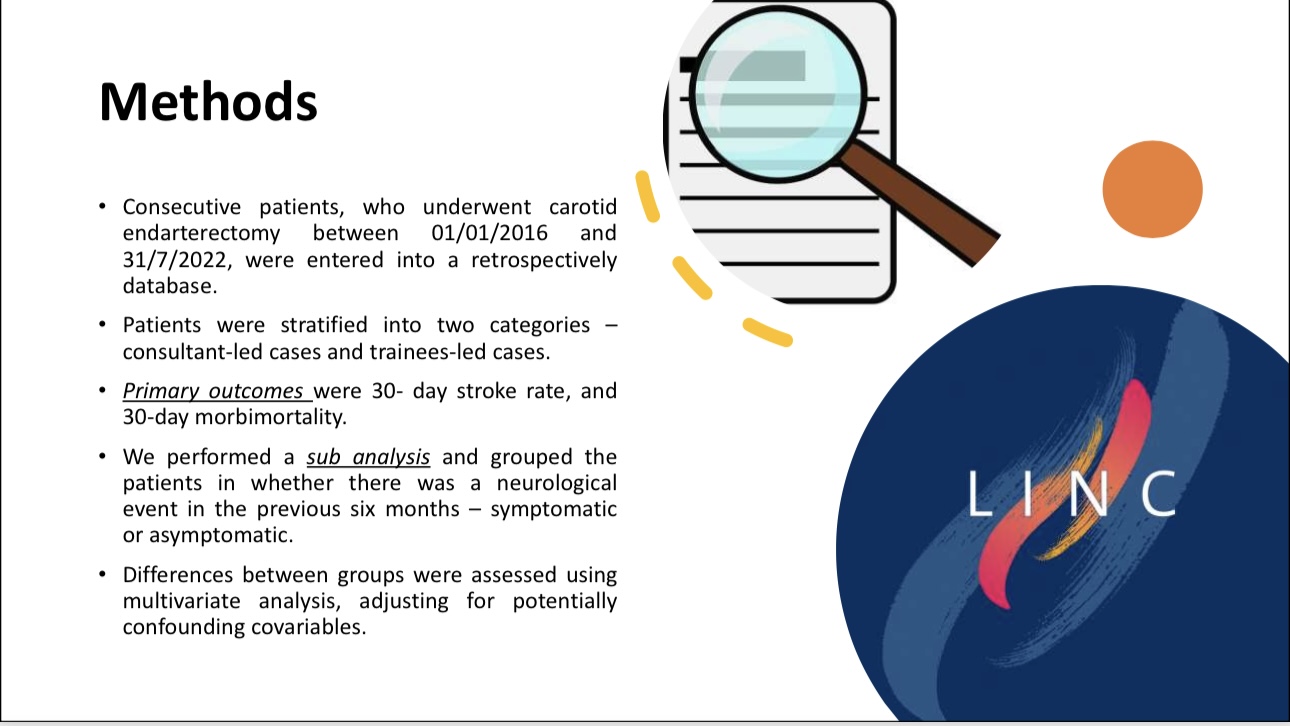
Results
Overall Outcomes: Trainees had higher 30-day stroke (5.2% vs. 3.1%, p<0.05p<0.05) and MB rates (6.7% vs. 2.8%, p<0.05p<0.05).
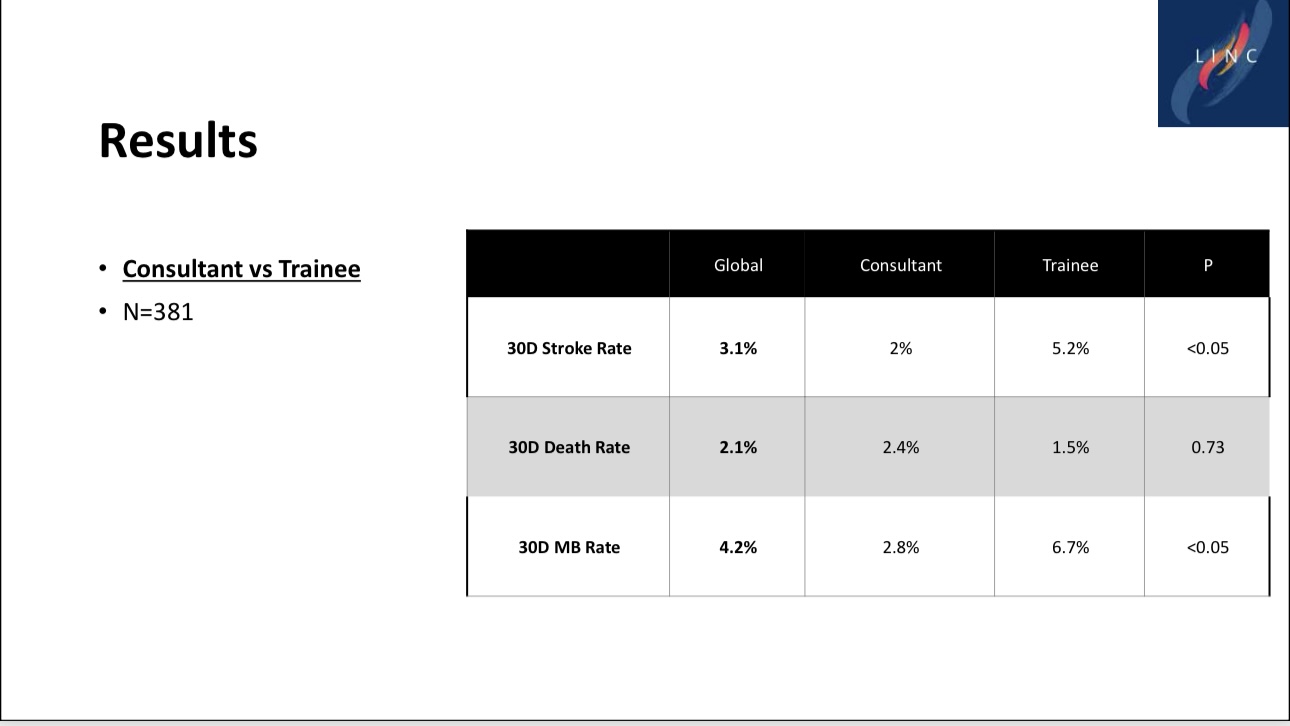
Asymptomatic Patients: Trainee-led cases showed a 7% stroke rate vs. 0% in consultant-led (p<0.03p<0.03).
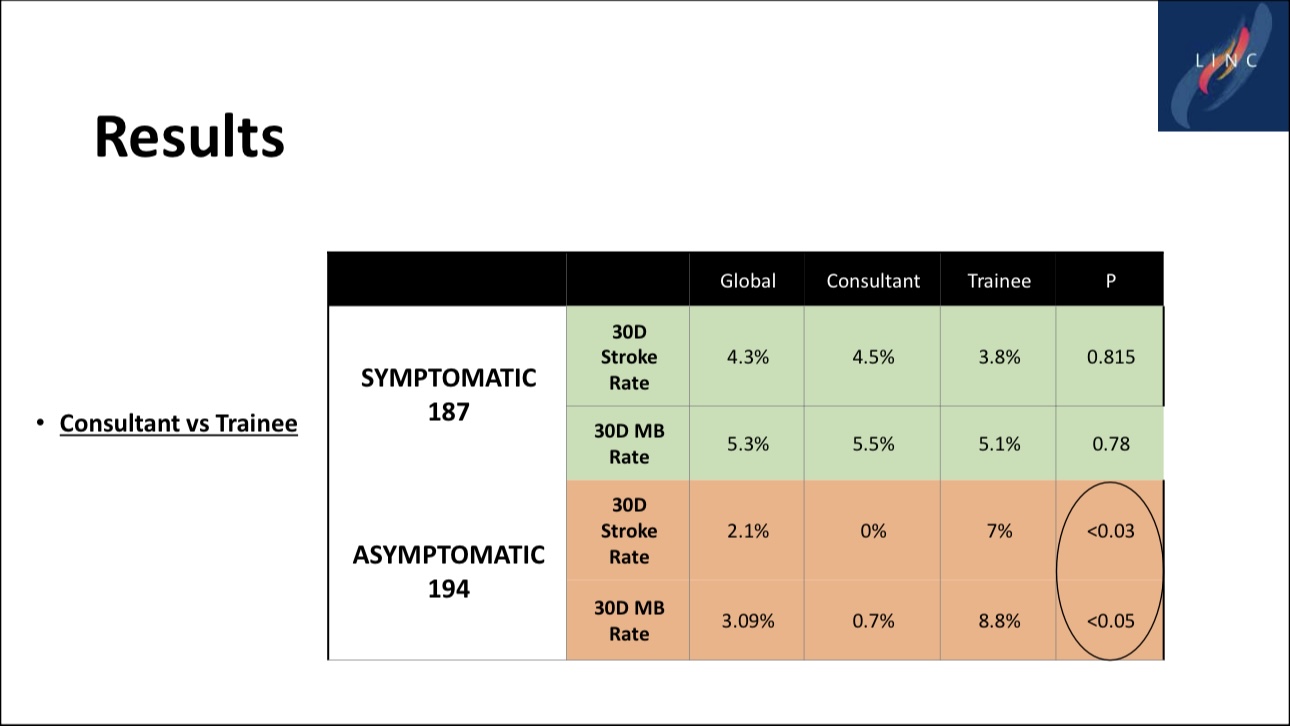
Symptomatic Patients: No significant differences between groups.
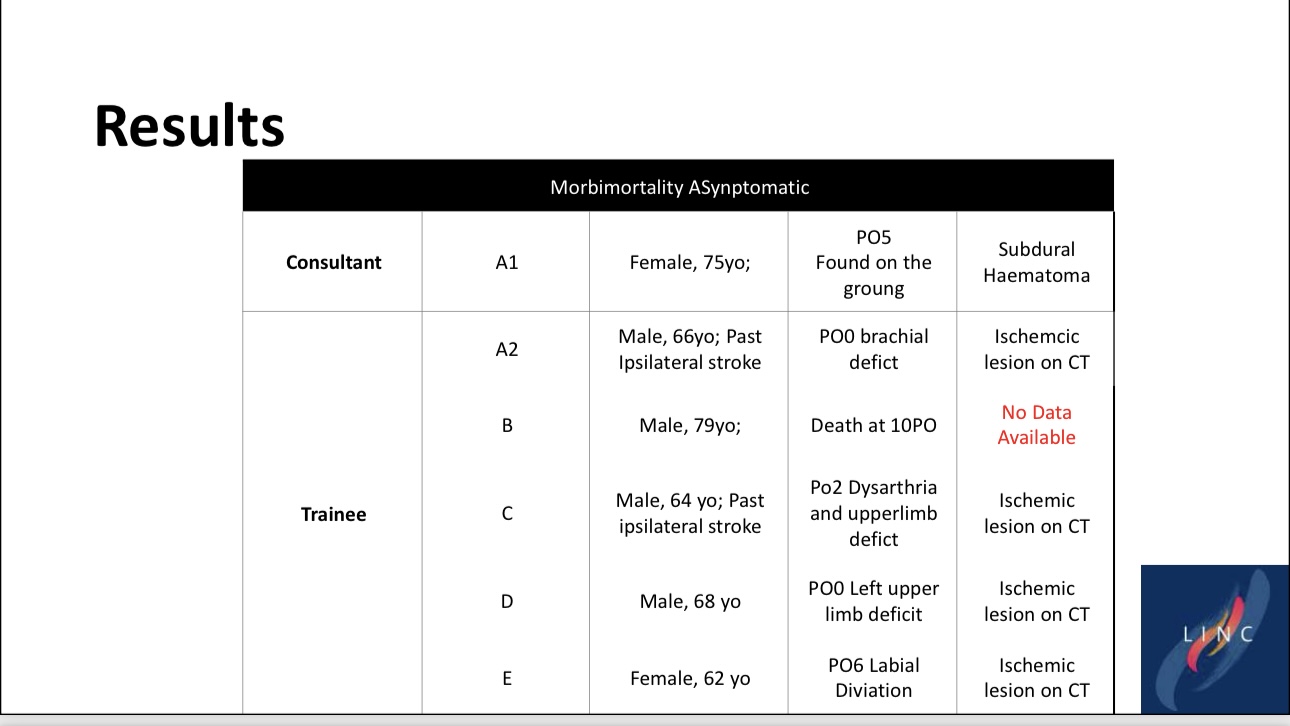
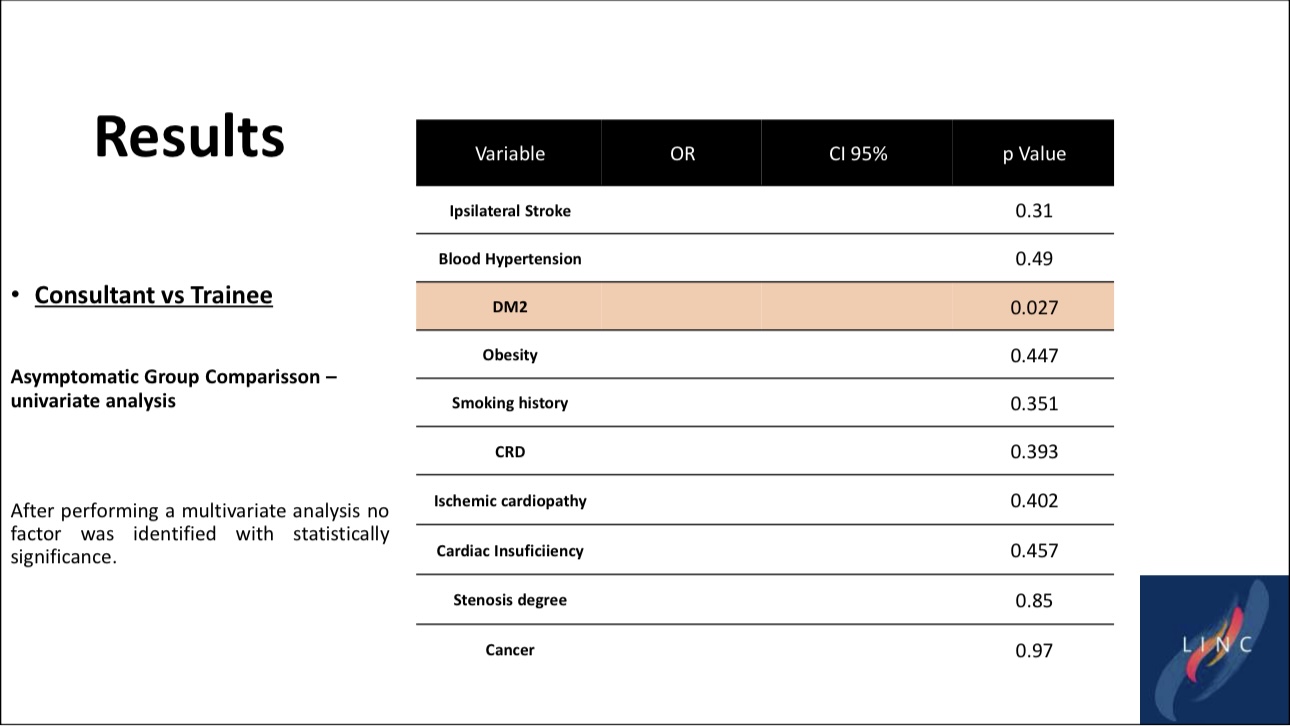
Discussion & Conclusion
1.Prolonged clamping time in trainee cases (15.8 vs. 12.3 minutes, p=0.001p=0.001) may contribute to adverse outcomes.
2.Recommendations: Multidisciplinary training programs and multicenter registries are essential to refine surgical education.
